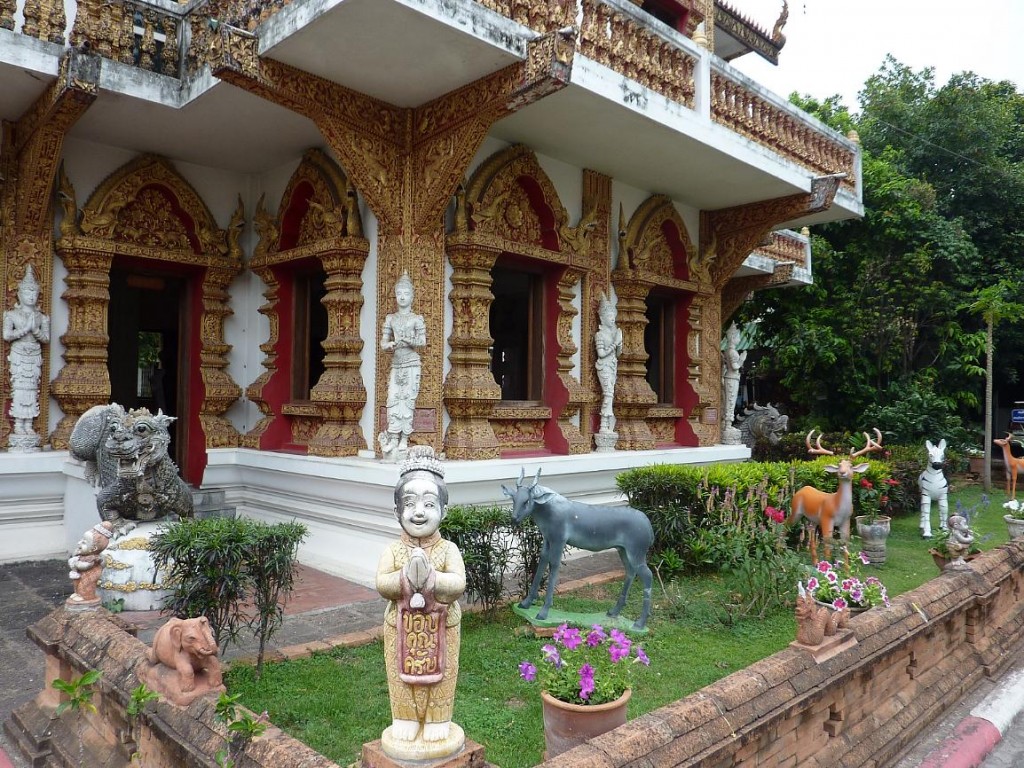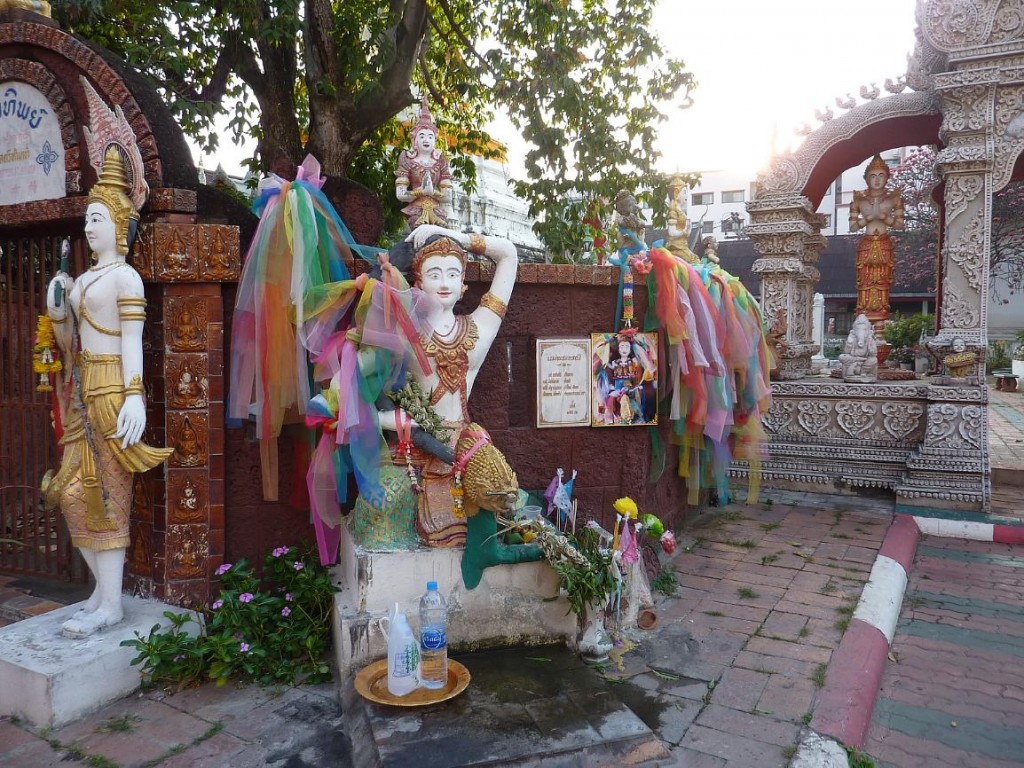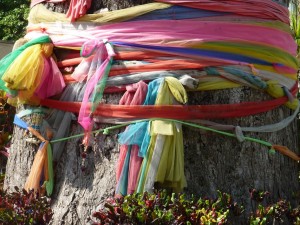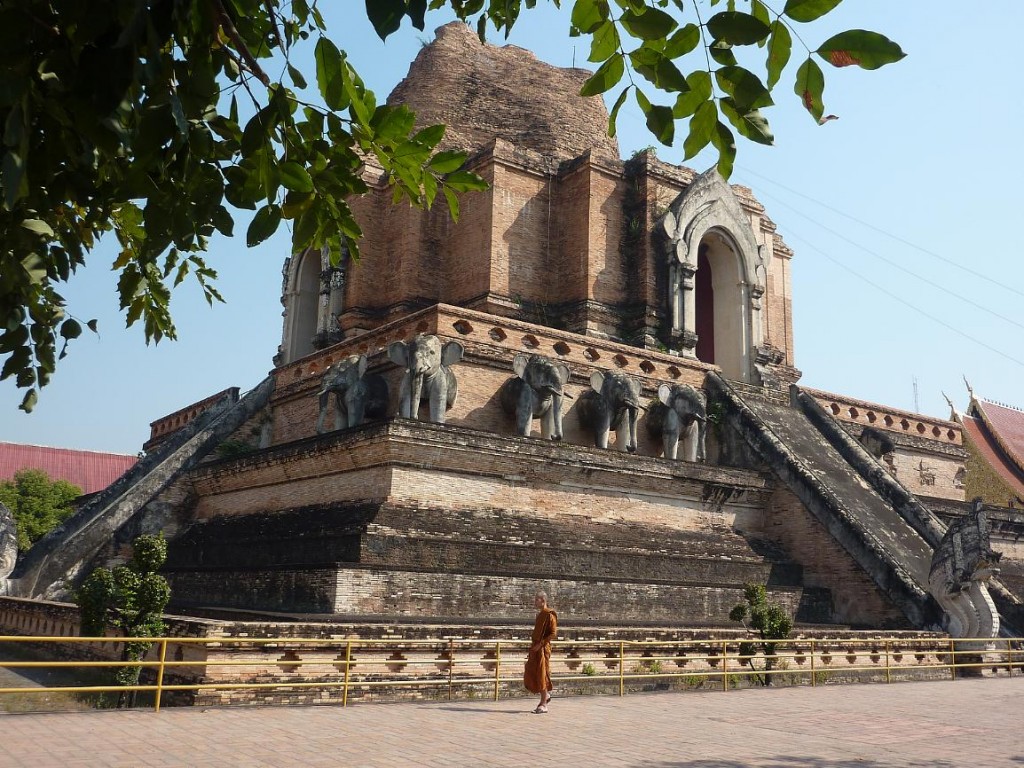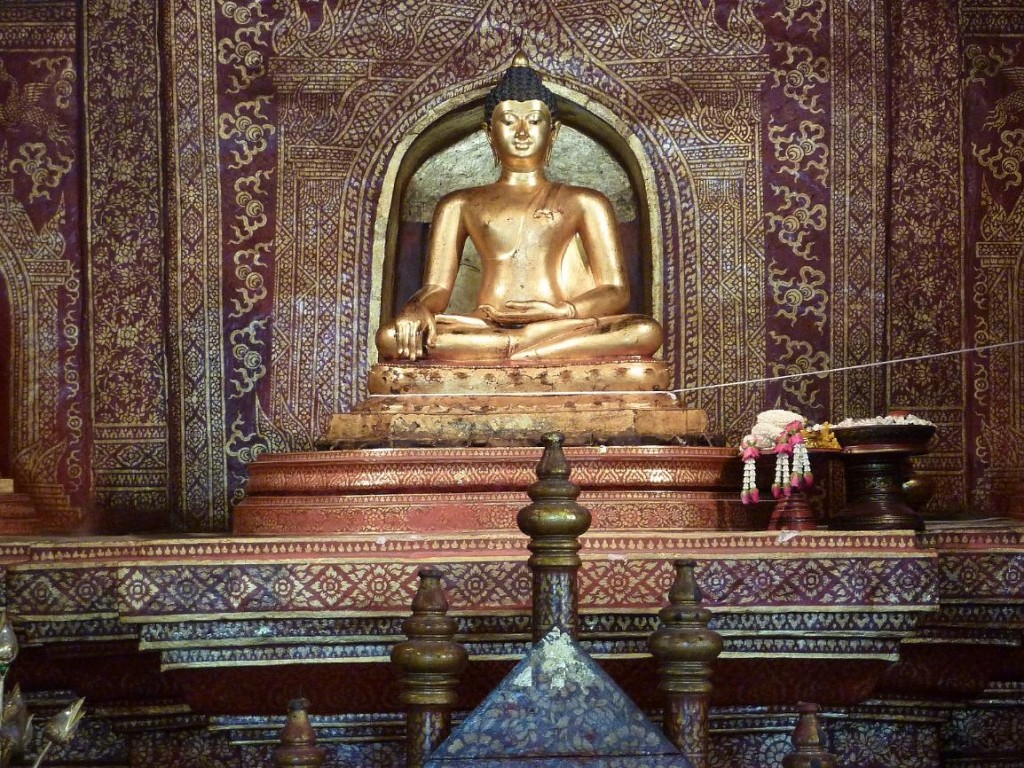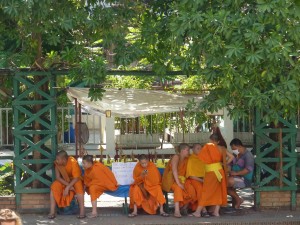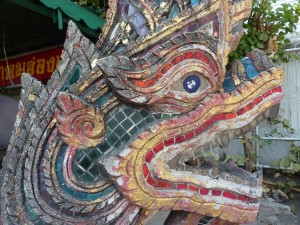 Despite hearing in advance that Chiang Mai has enough temples that even the most dedicated temple-spotter will be fully satisfied, their density and variety was still amazing. I had a list of temples I particularly wanted to see, yet I found myself just happening upon many more that were equally interesting.
Despite hearing in advance that Chiang Mai has enough temples that even the most dedicated temple-spotter will be fully satisfied, their density and variety was still amazing. I had a list of temples I particularly wanted to see, yet I found myself just happening upon many more that were equally interesting.
My first stumble-upon came five minutes into my first walk from my guesthouse – on the corner at Tha Phae Road was the Shan-Burmese Wat Mahawan (photos here). This temple compound dates back to the 1600s.
On another day, a quick turn east from Wat Mahawan brought me to Wat Bupparam.
This wat has a marvelous set of contrasts in its embellishments. A beautiful viharn sits high atop several linked staircases. The balustrades are topped by nagas – fierce, mythical dragon/snake creatures which often guard the temple entrances. These nagas are fierce, and cannibalistic. The tail of the bottom creature is swallowed by the one above, and his tail is consumed by the naga above him, and so on, to the top.
The nagas guarding the entrances to the stairways have multiple heads. Beware if these creatures takes you to be evil!
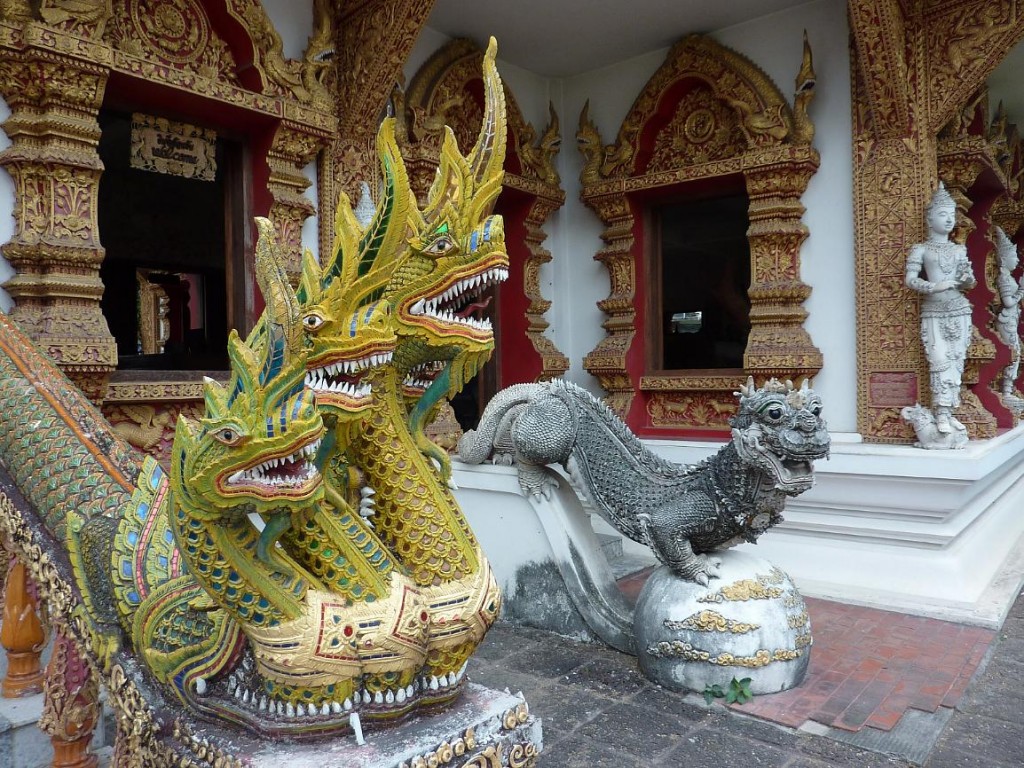
In contrast to the beautiful Buddhist sculptures and images, on the temple grounds is an extensive and eclectic collection of garden “art” – cement statuary with subject matter ranging through the animal kingdom, and beyond.
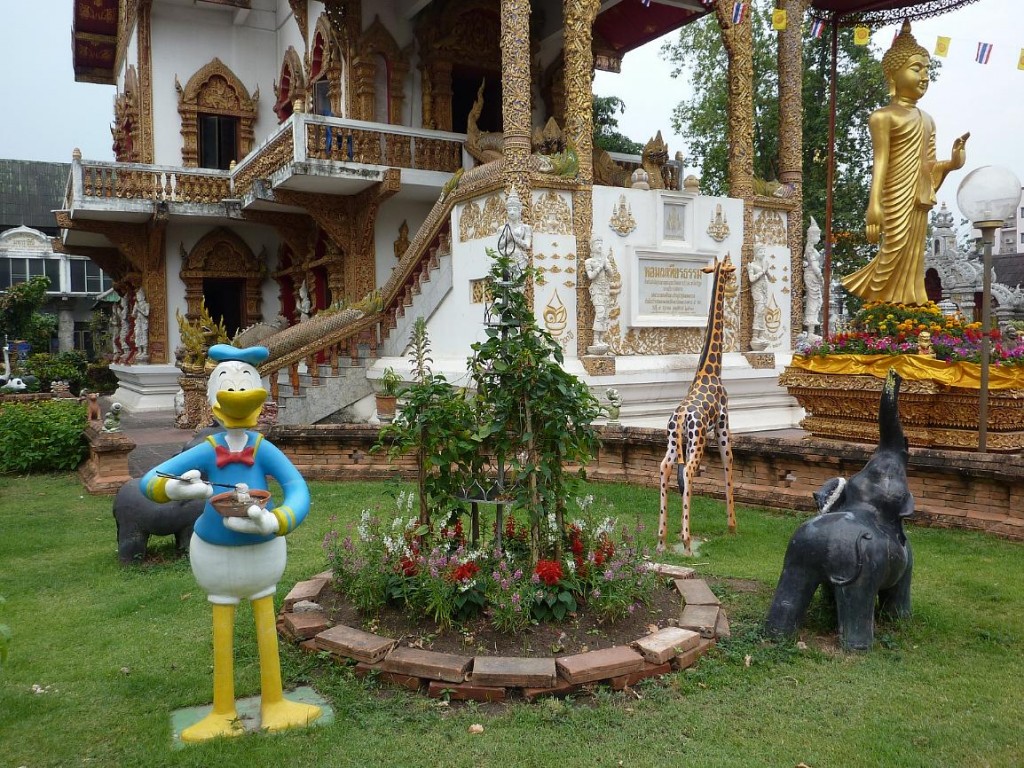
Here I met Donald Duck, eating a bowl of noodle soup. I love the sense of fun and play in the wats though it is seldom as incongruous as in this collection of Western-Asian garden kitsch.
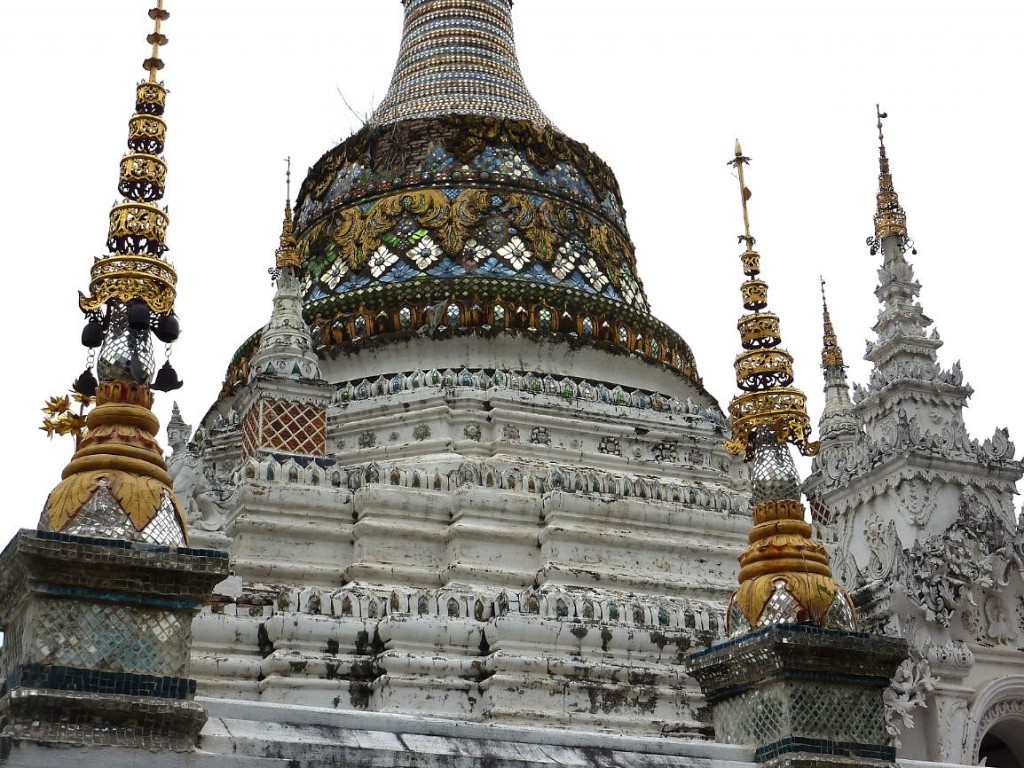 At the rear of the temple compound is an ancient chedi surrounded by a garden which has more conventional small Asian pieces. Though Wat Bupparam was one of the most amusing temples in Chiang Mai, it’s kitschy collection would have hardly have raised an eyebrow in the company of some of the wildly original temples outside of Mandalay in Burma.
At the rear of the temple compound is an ancient chedi surrounded by a garden which has more conventional small Asian pieces. Though Wat Bupparam was one of the most amusing temples in Chiang Mai, it’s kitschy collection would have hardly have raised an eyebrow in the company of some of the wildly original temples outside of Mandalay in Burma.
Buddhist temples are typically large complexes which include a wide variety of structures of various ages and degrees of restoration. There are a great many altars where the devout can kneel before images of the Buddha, where offerings of food and flowers are made. Some of these will be located in large elaborately decorated halls, and others in more intimate surroundings. Often these are roofed and enclosed by walls on three sides but open to the air on the fourth side. There are gardens with varied sculptures – often crazily colorful – where one can sit and contemplate and plazas where people gather, often to picnic and play.
Colorful silks are tied on some of the statuary.
Silk is also tied around the trunks of trees as an act of respect and devotion. This practice was most notable at Wat Chedi Luang, located in the center of the Old City.
The ancient and massive trees in the temple complex are thought to be lucky for the city of Chiang Mai, and so have been protected, and revered.
The centerpiece of Wat Chedi Luang – this partially renovated chedi in the Lanna style – was built in the mid 1400s. The Lanna kingdom dominated northern Thailand in the 13th century, gradually falling under Burmese rule by the 16th century.
There are stairways on each of the four faces leading up to large niches. This one, on the south, has been covered with a steep ramp to prevent unauthorized access, as have all but the eastern stairway. At one time the Emerald Buddha, now located at the Grand Palace in Bangkok, was housed in the eastern niche. It now holds a replica of the Emerald Buddha.
Elephant sculptures once stood on all the terraces below the niches. Five of these have been reconstructed. In the photo above, on the far side of the stairway/ramp, one can just spot what remains of the only surviving sculpture, sans trunk and ears.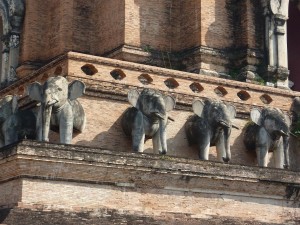
The top of the chedi was destroyed either by an earthquake in the sixteenth century, or by cannon fire in 1775. Because no one has been able to determine the appearance of the original structure, it has not been restored.
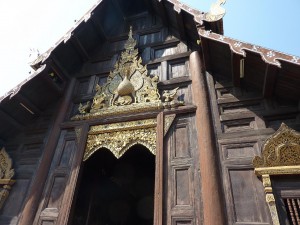 In northern Thailand and in Burma, one finds many beautiful old teak structures. One of these Shan style buildings lies a short distance north of Wat Chedi Luang. This fine teak viharn, now part of Wat Phan Tao, was constructed in 1846 as a royal residence.
In northern Thailand and in Burma, one finds many beautiful old teak structures. One of these Shan style buildings lies a short distance north of Wat Chedi Luang. This fine teak viharn, now part of Wat Phan Tao, was constructed in 1846 as a royal residence.
Walking on now a few minutes further west we arrive at Wat Phra Singh. Because it has housed the venerated Lion Buddha (Phra Singh) since 1360, this is the most visited temple in Chiang Mai. The wat grounds also contain many fine examples of Lanna art and architecture.
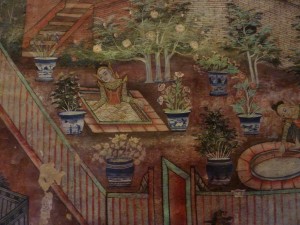
The Lion Buddha is housed in a small chapel toward the back of Wat Phra Singh. The wall behind it is decorated in gold stenciling (lai-krahm), while on the other interior walls of the chapel are faded murals. Along with the plentiful and varied Buddha images, one discovers a stunning variety of such embellishments when exploring the wats.
The Wat Phra Singh complex also contains several residential buildings for the monks as well as two school buildings.
As the young monks take a shady break in their school day, I sit too, head full of the many sights of the day – from the odd melding of east and west of Wat Bupparam, to the antiquity of Wat Chedi Luang, to the reverence in combination with practical purpose of Wat Phra Singh. One can only hope to explore a few of Chiang Mai’s many interesting temples in a long morning. And so, time for a break. We will wander through more of Chiang Mai’s Wats in the next two segments.

